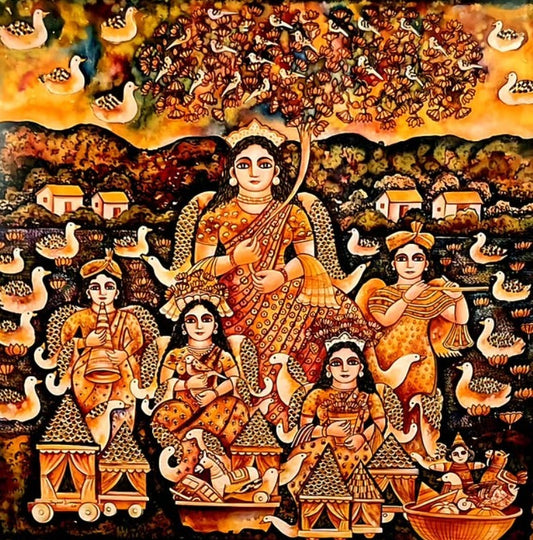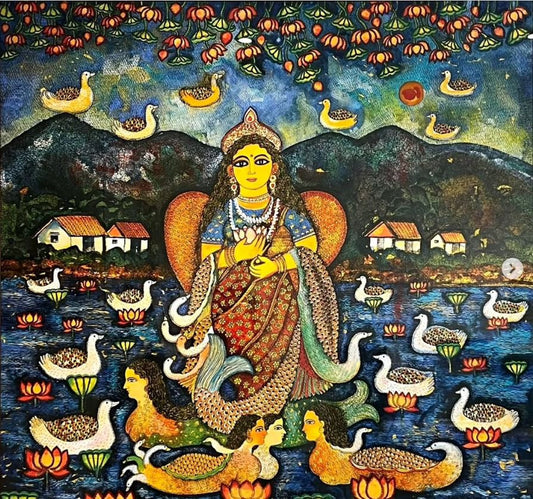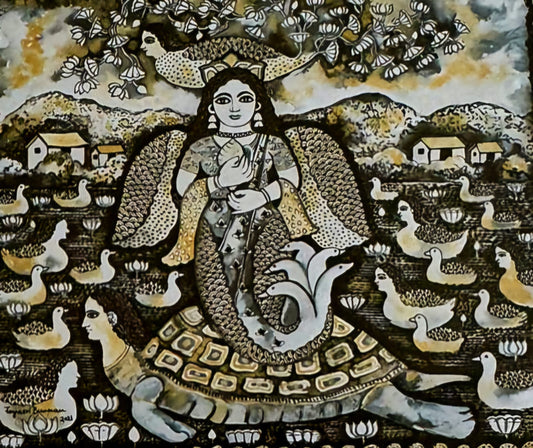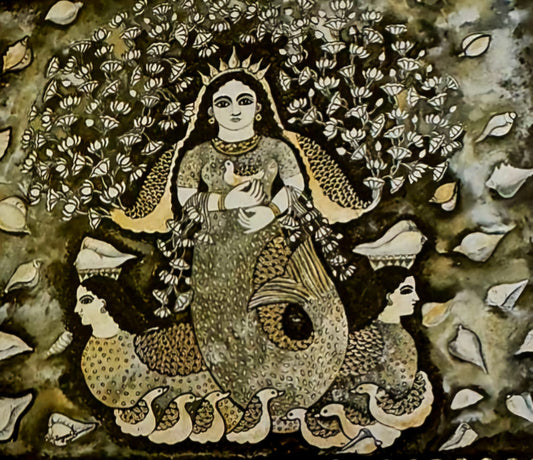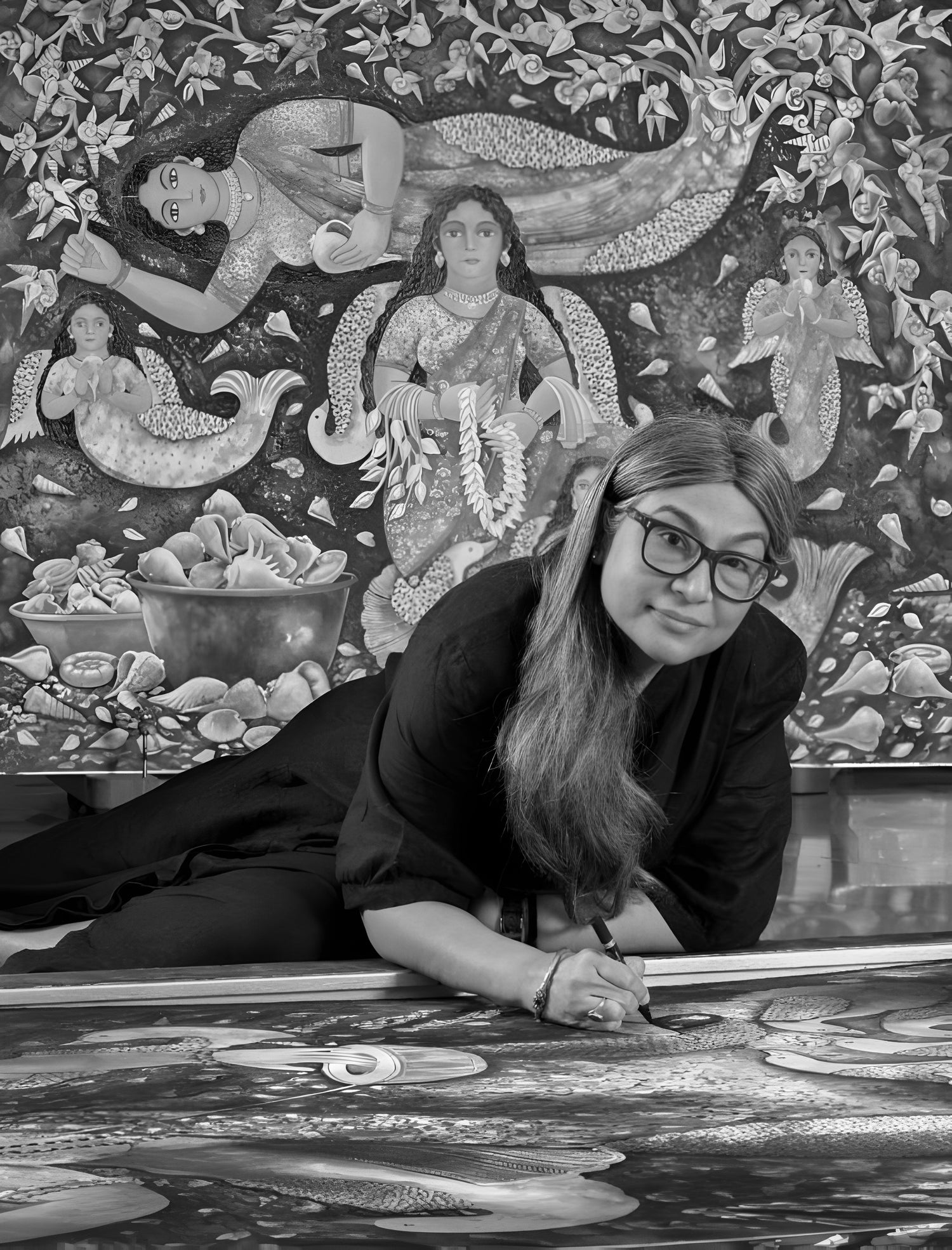
JAYASRI BURMAN
Jayasri Burman’s work moves between the realms of myth, memory, and lived experience with a language that is both ornate and immediate. Her paintings and sculptures are rich with detail, vivid figures rendered in flattened, patterned spaces, framed by flora, fauna, and celestial motifs. Each composition appears as a world unto itself, where the natural, spiritual, and human converge in harmonious balance. Rooted in storytelling and layered with symbolism, her visual vocabulary draws deeply from Indian folk and mythological traditions, yet speaks with a clarity and urgency that is unmistakably contemporary.
Her engagement with the feminine is central. The women who inhabit her paintings are luminous, self-contained presences, neither idealized nor diminished, but rendered as powerful, divine, and fully sovereign. They are frequently shown in communion with birds, fish, trees, and stars, suggesting a cosmology in which gender, ecology, and spirit are intimately linked. Her goddess-like protagonists are drawn from classical Hindu epics such as the Ramayana and Mahabharata, as well as oral traditions and personal recollections. These sources are neither quoted nor reinterpreted literally; rather, they are refracted through her own sensibility to create figures that function as contemporary archetypes.
Burman’s early education at Kala Bhavana, Visva-Bharati University in Santiniketan, instilled in her a deep respect for indigenous forms and craftsmanship. This grounding is evident in her intricate linework, compositional rhythm, and preference for hand-drawn detail. Later studies in printmaking in Paris expanded her technical vocabulary, allowing for an ease of movement between traditional and global influences. Her work retains a sense of lyrical intimacy, even as it engages with broader social concerns—gendered violence, ecological imbalance, and the marginalization of folk practices—addressed not through rhetoric, but through allegory and symbolic resonance.
In her sculptural practice, these same motifs take on new dimensions. Crafted in bronze, her figures are stylized yet expressive, adorned with mythological creatures and motifs that echo her painted universe. These forms extend her narratives into space, revealing a tactile interest in materiality and an ongoing dialogue with classical Indian techniques. Recognized with the Padma Shri in 1985 and commemorated by the Indian government with a postage stamp series in 2007, Burman’s contribution to Indian art is enduring. Her work offers a space of affirmation and continuity, where ancestral knowledge and personal memory coalesce into a celebration of feminine strength and cultural resilience.

